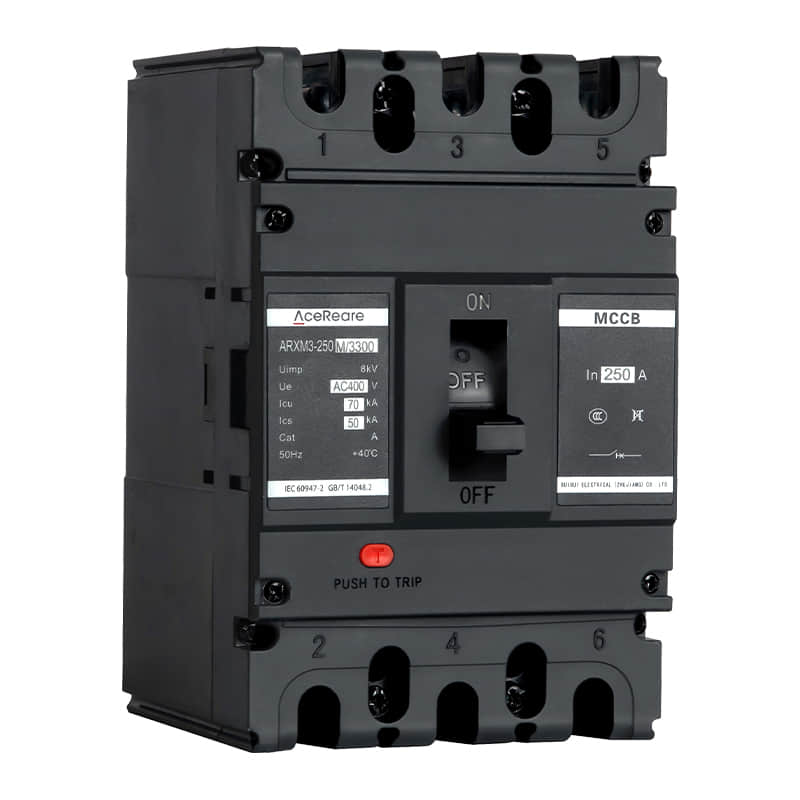
Date | 2024-01-10 12:55:58
In both domestic and industrial electrical environments, safety is always our primary concern. The molded case circuit breaker, this seemingly ordinary electrical component, plays the role of the "four-pole patron saint" protecting the safety of electricity. Today, we will take a closer look at this important electrical protection device.
First, let us understand the structure and working principle of molded case circuit breaker. This molded case circuit breaker, also known as a 4 pole circuit breaker, is a switching device that automatically opens when the current exceeds a predetermined value. It consists of a plastic shell, contacts, springs, thermal elements and other parts. Its working principle is based on the thermal effect of current and electromagnetic force. When the current is too large, the thermal element will deform, triggering the mechanical device inside the circuit breaker, causing the contacts to separate, thus cutting off the power supply and protecting circuits and equipment from faults such as overload and short circuit.
Molded case circuit breakers have a wide range of applications, whether in household electricity or industrial production, they can be seen. In households, molded case circuit breakers are mainly used to protect switch cabinets and boxes at all levels of the power distribution system, as well as household appliances, sockets, etc. In industrial environments, molded case circuit breakers are widely used for overload and short-circuit protection of motors, transformers and various electrical equipment.
However, the selection and use of molded case circuit breakers is not easy. When selecting, you need to select the appropriate model and specifications based on actual needs and load conditions. For example, choose a suitable molded case circuit breaker based on the parameters of the circuit such as voltage, current, and power, as well as the requirements of the use environment, such as waterproofing and dustproofing. In addition, some details need to be paid attention to during installation and use, such as the installation location should be convenient for operation and maintenance, and regular inspection and maintenance should be carried out during use.
In addition to selecting and using molded case circuit breakers, we also need to understand their common faults and how to deal with them. For example, when a molded case circuit breaker fails to close or trip, it may be due to mechanical failure or electrical failure. At this time, it is necessary to check whether the mechanical part of the circuit breaker is normal, whether the contacts are in good contact, and whether the electrical parts such as the thermal element and tripper are working properly. For some common faults, such as contact ablation or spring failure, they can be solved by replacing corresponding parts or adjusting relevant parameters.
In short, molded case circuit breakers are important equipment for ensuring the safety of household and industrial electricity, and their performance and quality are directly related to the safety of our lives and property. Therefore, we should pay attention to the selection, installation and use of molded case circuit breakers, as well as regular inspection and maintenance. Only in this way can we truly play the protective role of molded case circuit breakers and let power safety protect us.
